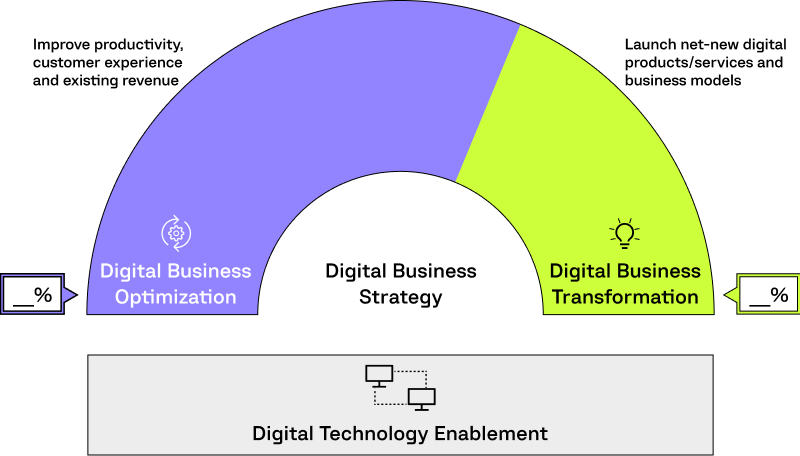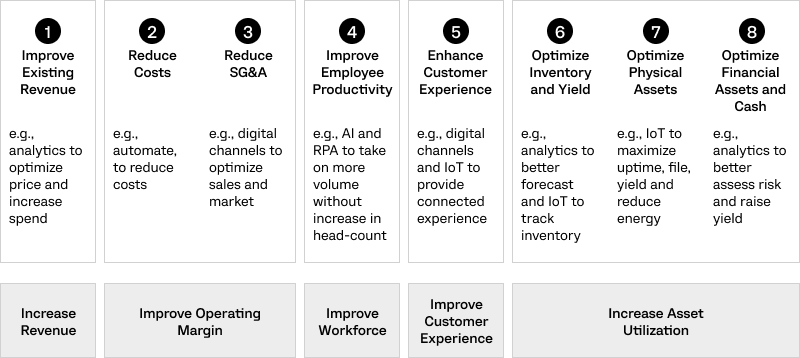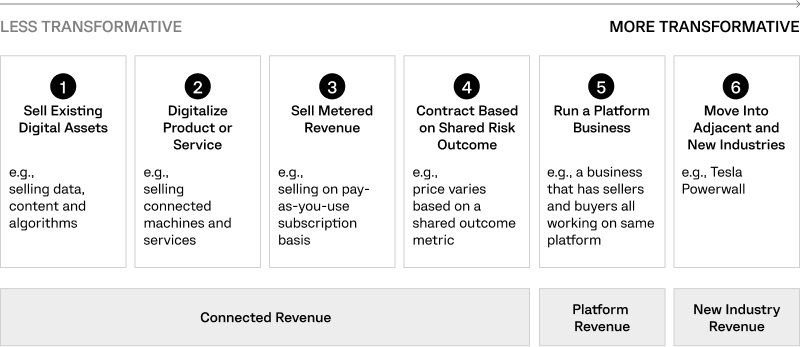We begin by mapping your core operations, diving deep into processes, tools, and business objectives to uncover hidden bottlenecks. From there, we design a clear, step-by-step roadmap that ties every technology investment directly to measurable business outcomes.
Computools offers digital optimization services, focusing on fine-tuning your existing business systems, processes, and tech infrastructure with next-gen software solutions. We make them more efficient, user-friendly, and cost-effective, turning them into a solid foundation for continuous business improvement.
Our team delivers BPA services through custom software solutions that optimize repeatable business workflows. Whether it’s financial, HR, education, sales, or document management automation, we design intelligent systems that reduce manual effort, optimize resources, and unify operations across every department.
Computools integrates AI development naturally into your organizational workflows, from AI agents and anomaly detection tools to predictive analytics solutions. These aren’t just add-ons; they solve complex challenges, lower operational costs, and elevate your customer experience in ways that truly matter.
Our DevOps engineers migrate your systems to Azure, AWS, or GCP and implement CI/CD pipelines, autoscaling, and Infrastructure as Code. This enables you to operate faster, minimize downtime to zero, and scale on demand with a cost-efficient stack.
Don’t let outdated systems hold your business back. With our digital transformation services, we modernize your legacy infrastructure, strengthen security, and integrate next-gen technologies, keeping you agile, future-ready, and able to scale on demand.
Data delivers value only when it’s accessible and actionable. At Computools, our engineers unify your data in a secure cloud lakehouse with automated ETL pipelines. Interactive dashboards and predictive models transform raw data into insights, empowering you to forecast accurately, adapt quickly, and make confident business decisions.
Keep your business secure and resilient at all times. As part of our digital transformation services, we identify vulnerabilities, deploy robust defenses, and actively mitigate threats before they disrupt your operations.



Chief Delivery Officer

Computools is a global software engineering and consulting company with 250+ engineers, 400+ delivered projects, ISO 9001/27001 certifications, GDPR & HIPAA compliance, Microsoft and AWS Partner status—trusted by Visa, Epson, IBM, Dior, Bombardier and the British Council.
Total Projects Delivered
400+ projects delivered by Computools, but it’s not just a number. Each one represents a unique business story, shaped by challenges, goals, and real impact.
Experts
Tap into the power of 250+ certified experts with strong tech skills and deep industry-specific expertise. From startups to Fortune 500s, we deliver high-impact software solutions globally, on time and at scale.
Rating on Clutch
Rated 4.9/5 on Clutch by clients worldwide for reliability, performance, and results. Trusted by global businesses to consistently deliver real value.
01.
We deliver high-quality software solutions on time and within scope. Our approach combines efficient resource management, process optimization, and cutting-edge technologies. We stay aligned with industry best practices and continuously adopt the latest tech trends to ensure top-tier service.
02.
Open communication and honest reporting are core to how we work. We provide full visibility into project timelines, financials, and progress. Transparent collaboration builds trust, and trust drives successful, long-term partnerships.
03.
We align our work with your strategic business objectives. From defining success metrics to adapting responsibilities and workflows, our team is accountable, flexible, and focused on achieving strong results for your organization.
04.
We adapt to each client’s unique needs with personalized approaches and scalable processes. By investing in our team’s professional skills and innovative methods, we ensure our services evolve to meet your goals, and outperform expectations.
“The team was very friendly and had the highest level of competence, engagement, and project management.”

“Computools predicted all possible points of our business growth and implemented them into the project.”

“We were highly satisfied with their deep understanding of our fintech processes and their project management was really superb.”

“Computools is a highly professional company with a skilled and responsive team. Their ability to propose valuable improvements and their dedication to the project made a significant difference.”

“The most noteworthy value that stood out was their exceptional experience in developing AI software solutions.”

“We were deeply impressed with their technical expertise, transparency, and flexibility. The team was highly skilled, easy to work with, and always proactive in solving challenges.“

“Computools offered non-standard solutions and maximized their investment in our business success.“

“Our company is impressed by their client-first approach and deep niche expertise.”

“A very comfortable collaboration and clear communication on every stage of platform development and maintenance.”

“After all these years, Computools never fails to arrive on time and with a quality that never ceases to amaze me. They work well as a team and are adaptable and communicative.”

“Within the first three months of its use, the designed program by Computools significantly reduced meter reading fraud by over 30%. Additionally, we saw a rise in operational effectiveness. Customer comments highlighted greater billing transparency and speedier service delivery, which contributed to an improvement in customer satisfaction levels.”

“They were professional, adapted to our short-notice needs, documented everything, and were transparent.”

“Thanks to Computools, we have seen a 15% growth in sales and a 40% boost in user satisfaction. Our image management has become more efficient, and our diagnostic capabilities have improved. Overall, the team has delivered a high-quality solution that meets our requirements.”

“Computools has significantly improved our LMS. The team holds regular meetings and provides detailed project reports, keeping us well-informed. We communicate via email, and overall, everything has gone smoothly.”

“Computools worked closely with us to understand our challenges. They developed a platform that integrated seamlessly with our existing infrastructure and Automatic Identification Systems (AIS) to capture private vessel data.”

“Computools’ work has had a positive impact on the client’s business. The team is flexible and responsive to the client’s needs. Their expertise has been key to the project’s success. Overall, the engagement has been positive.”

“Due to the platform’s use, the new products’ generated go-to-market timeline improves by 20%, cutting down on plan costs and, most importantly, enhancing the connection between the departments. The availability of near real-time information and the enhancement of the speed of decision-making are truly remarkable.”

“Thanks to Computools, we have successfully implemented our system and reduced the need for manual inspections. The team works in regular sprints and keeps us updated on progress. Their personalized approach, ability to listen, adapt, and continuously refine their methods are truly impressive.”

“Computools’ team truly impressed us with their dedication to the project, their ability to adapt to our processes, and their exceptional hard skills. This allowed us to identify many risks in the initial development stages and address some gaps in our processes. Professionalism, contribution, and flexibility are what define Computools. Based on my experience, I strongly recommend Computools for Dedicated Delivery and outsourcing project services!”

“Computools has delivered a functional solution that helped us increase revenue fivefold, reduce costs, and boost productivity. The team efficiently manages tasks in Jira and keeps us updated through weekly calls. Their productive approach and strong work ethic truly stand out.”

“Computools’ technical knowledge is impressive.They delivered the product on time, within the agreed budget, and fully aligned with our requirements.”

“Thanks to Computools’ efforts, we have seen compliance with deadlines and budget and team scalability as needed. The team has a confident project manager who delivers a professional and organized project. Moreover, Computools has quickly onboarded to the project and delivered fast results.”

“Thanks to the new solution, we’ve significantly reduced manual marketing workflows. Computools manages the project effectively, using Scrum methodology to execute tasks efficiently. Their problem-solving skills and ability to anticipate challenges set them apart from other providers.”

“Computools has successfully delivered everything as planned, adding value to the app. The team is highly approachable, tracks progress, and provides real-time updates via Slack. They maintain smooth communication through email and messaging apps, regardless of time zones.”

“Thanks to Computools, we now have an app that integrates 2,000 users into a single platform, significantly reducing the time spent on data exchange between systems and applications. The team manages our collaboration effectively and quickly adapts to changes. Overall, our experience has been highly successful.”

“Computools has been responsible for creating a novel database and front-end solution, incorporating both the development portal for digital standards and a modern shop for the sale of these standards. Throughout the course of the project, we have been consistently impressed by the professionalism exhibited by the Computools team, as well as their detailed understanding of our client’s processes. Their expertise, commitment to our objectives, and consistent delivery of high-quality work are notable aspects of their service.”

“Thanks to Computools, the client saw a 35% increase in daily active users and a 25% rise in user retention rates. The Android app also saw a 20% reduction in load times. User feedback indicated high user satisfaction; the feedback highlighted the product’s enhanced navigation and content linkage.”

“They are some of the best software developers I ever had the privilege to work with. Among other skills, their project scope and time estimation are very good and when wrong will work around the clock to make the date especially if it has business consequences. Not only are they amazing software developers, but they are also great people to work with. I am in awe seeing their devotion.”

“Computools was selected through an RFP process. They were shortlisted and selected from between 5 other suppliers. Computools has worked thoroughly and timely to solve all security issues and launch as agreed. Their expertise is impressive.”

“After analyzing our requirements, Computools outlined potential solutions and deadlines for each stage. They designed the user flows and defined the user personas. They built the platform infrastructure and oversaw its implementation. Once we finished development, we conducted usability tests to assess their submitted work. Computools led an organized, agile team that adapted to our evolving needs. They listened to our feedback and managed their time well throughout the project.”

“The application perfectly meets the large-scale demands of the project, with the team creating an effective solution that works well and provides the required level of control. They were communicative, responsive, and proactive throughout the project, demonstrating their experience at all times.”
“The Computools team came to us with ideas, and that’s unusual. I’m satisfied that they gave us the right recommendations which are contemporary and relevant for today’s users. Because with other companies on previous projects, it was like pulling teeth to get them to make suggestions. The product received positive feedback even before being implemented and has led to significant customer and revenue growth.”

“We had to meet a significant increase in the development, so we needed to scale up relatively quickly but cost-effectively. The result definitely meets our expectations. The completed project received positive feedback for features and overall design. They’re very organized from a project management perspective and they’re technically competent. We appreciated their innovativeness, professionalism, and great communication skills. ”
“Their team has given us strong learning opportunities, and their developers are accommodating and collaborative.”

“We’re satisfied with the quality of work Computools deliver. They listen and try to understand our needs instead of finding new ways to charge us. We appreciate their transparent work structure. They kept us up-to-date regarding their progress throughout the entire development cycle. Knowing the system’s status throughout the coding process put my mind at ease.”
“They are very accommodating. They have very talented people. I’ve worked with hundreds of overseas developers and it’s not normal to have such excellent overseas developers. I don’t have to babysit Computools. They speak great English. They’ve also really helped with making suggestions on how to improve the product.
When we first launched our product at the beginning of the year, we were at 30,000 users a month and now we’re at 70,000. The bump in users is a result of the increased option rate and the new toys that Computoolls have built for me.”

“Computools developed software for our business to help automate our processes. Their team is very easy to speak to over Skype, where I can speak directly to a designated client manager, project manager, and the development team.”

“They were able to reduce the customer entry acquisition process from 2–3 weeks to 48 hours and have completely optimized all business processes. They’re a trustworthy company, full of integrity and great principles. They also communicate well in spite of the distance and resolve problems quickly.”

“They have a very positive attitude, which I enjoy a lot, and their technical skills are impressive. During this project, I got acquainted with their VP in charge of technical development, and he’s very impressive. Technologically, they are on the cutting edge of what they do. They use a lot of interesting technologies, which is good.”
IT modernization focuses mainly on upgrading outdated technology, while digital transformation is broader, it reimagines business models, processes, and customer experiences through technology adoption.
The timeline depends on your company’s size, goals, and complexity. Some initiatives, like process automation or app modernization, can take a few months, while full-scale transformation may take 1–3 years. The key is breaking it down into phased, ROI-driven steps that deliver measurable results along the way.
No, it’s about people, processes, and culture as much as technology. Success depends on aligning teams and workflows around new digital capabilities.
Absolutely. Digital transformation is not just for enterprises. SMBs can gain agility, scalability, and competitive advantage often faster than large organizations.
Cloud computing, AI, machine learning, automation, IoT, blockchain, and data analytics are the most impactful drivers of transformation today.
Common hurdles include employee resistance, unclear strategy, outdated systems, and lack of leadership alignment. Addressing these early is key.
Strong leadership ensures alignment between business goals, technology adoption, and cultural change. Without executive support and a clear vision, digital transformation initiatives often fail to deliver their full potential.
It’s an ongoing journey. While specific initiatives (like migrating to the cloud) can be completed, true digital transformation requires continuous adaptation to new technologies, customer expectations, and market conditions.
Absolutely. Our experts create roadmaps that align technology with your 3–5 year business vision, ensuring every step drives measurable value and supports future scalability.
We put CX at the core of every transformation. By mapping customer journeys and removing friction points, we ensure your digital systems don’t just run efficiently, but also delight users and build loyalty.
We rely on proof-of-concept pilots, architecture-first, phased implementation, and continuous feedback loops. This ensures new technologies integrate smoothly, employees adapt confidently, and business continuity is never compromised.
Yes. We work with enterprises worldwide, offering multinational delivery models, multilingual support, and cross-border compliance expertise. Our software solutions scale seamlessly across global markets, ensuring consistent digital transformation outcomes enterprise-wide.
Absolutely. We offer continuous optimization, innovation, and support cycles, making sure your enterprise systems evolve with market shifts, new regulations, and emerging technologies.
We design every solution with enterprise-grade security and regulatory compliance in mind. Whether it’s GDPR, HIPAA, PCI DSS, or other industry standards, our experts ensure that transformation enhances innovation without creating compliance risks.